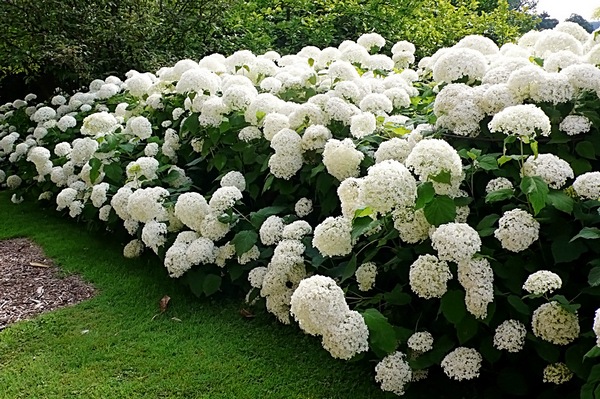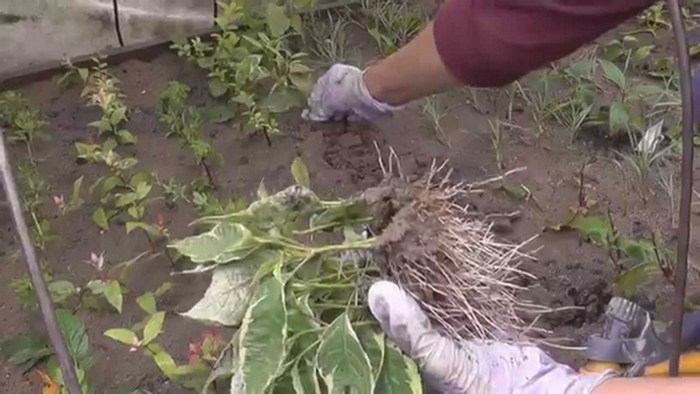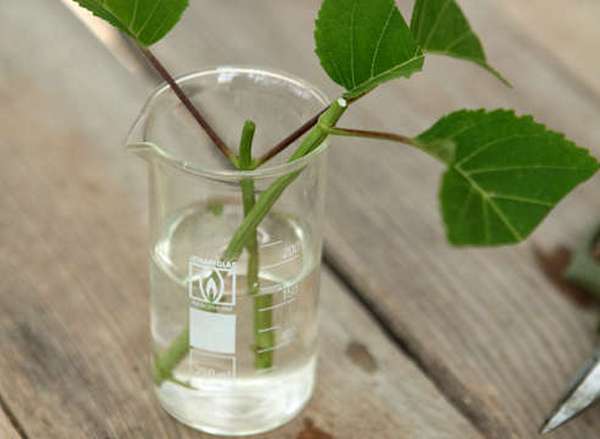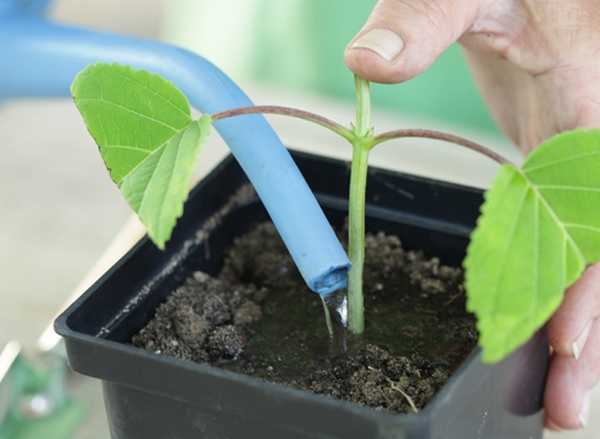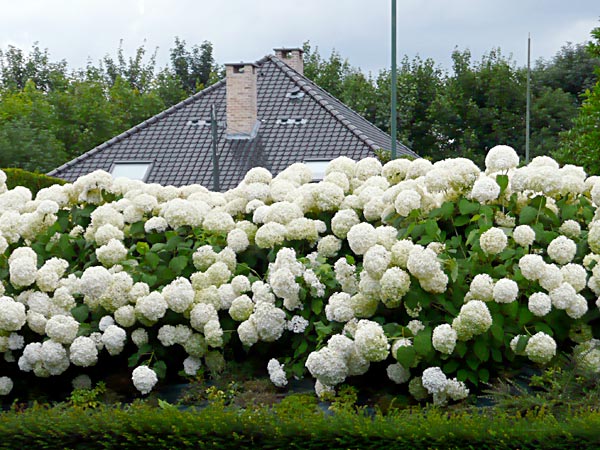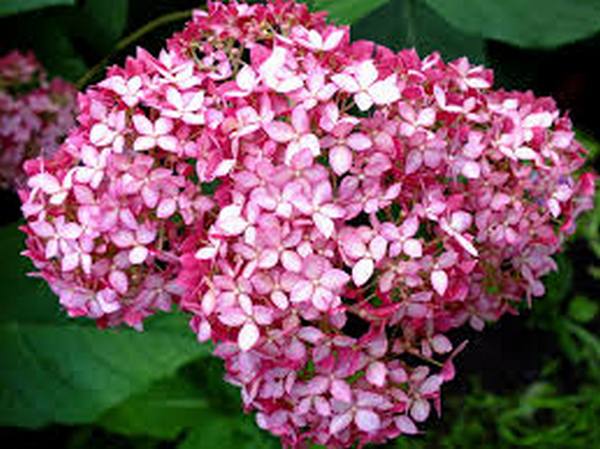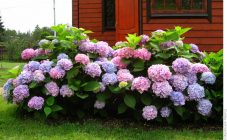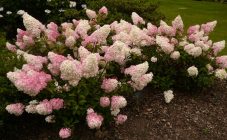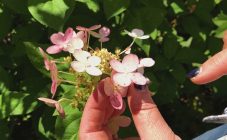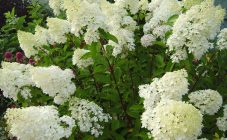Content:
Hydrangea is a favorite flower of many gardeners. It pleases with flowering from early spring to late autumn, before the arrival of the first frosts. Hydrangea is grown at home in indoor pots and in an open-air garden. To a frequent question from gardeners: why hydrangea does not grow in a garden plot, the answer follows - hydrangea is demanding in care.
Description
There are about 80 varieties of hydrangeas in the world. In indoor conditions, a small hydrangea is grown: garden or large-leaved.
Hydrangea is divided into two types: artisanal or tree-like, capable of growing up to 3 meters in height, and in the form of a liana, twisting along the trunk of a tree up to 30 meters or as long as the height allows it. Hydrangea species: deciduous and evergreen. In the temperate zone of Russia, a predominantly deciduous species grows.
The color of the flowers of the plant is different: white, pink, cream, purple, blue, blue and red. Inflorescences are in the shape of a ball or umbrella. The fruit with seeds near the hydrangea is in the form of a box with 3-5 sections.
Hydrangea is very resistant to diseases and pests.
Growth after planting
Hydrangea is planted in early spring or autumn in fertile and loose soil. It is better to choose a place for landing that is protected from the winds and with little shading, without direct sunlight. The plant grows poorly under the sun, flowers become small and faded.
Hydrangea is propagated in three ways: by cuttings, dividing the bush and layering.
Growing seedlings into a healthy and wonderful a flowering plant is possible subject to somex conditionsth landing:
- A pre-prepared mixture of peat, turf and sand is poured into a hole 30x30x30 cm. Next, mineral fertilizer is poured. The root does not completely fill up, the neck remains on the surface.
- After planting, regular and moderate watering is required.
Pwhen dividing
The bush must be separated with strong roots so that the plant takes root in a new place.
Time is autumn or spring.
Pwhen grafting
Cuttings, in the form of young shoots, are cut from the plant. Leaves are removed from the bottom, the cut site is treated with a solution to accelerate growth and planted in nutrient soil. With the petiole method, the stalk is covered with a jar to create a greenhouse effect. After engraftment, the cutting is transplanted to a permanent place.
Time is February. The parent bush is transplanted into a pot in late autumn and placed indoors, up to +2 degrees Celsius, gradually increasing the temperature to +10 degrees by February.
Pwith layering
Young shoots, without separating from the mother bush, are buried in the ground. The length of the shoot is about 20 cm. After six months or a little earlier, the young shoot is separated from the bush and transplanted. Time is late autumn.
Haverunning in autumn and winter
In the fall, watering hydrangeas should be reduced and vitamin and mineral phosphorus-potassium fertilizers added. The roots are mulched with sawdust, dry leaves, needles, chopped pine bark. In winter, the roots can be additionally covered with snow.
When hydrangea grows poorly after winter, the reason lies in its pruning in the fall. It is necessary to prune so that the branches are not damaged during the winter period: cut off the lower and middle leaves, which can be infected and damaged by fungal spores, and shoots, leaving only up to five healthy and strong ones.
Hydrangea should be covered during the winter months as soon as the first frost occurs. This is especially true for small plant bushes. Rain film can be used as a cover material. During severe frosts, wooden boxes are used, sheathed from the inside with heat-insulating material.
Hydrangea varieties such as paniculate and tree-like hydrangea need spring pruning. Otherwise, the branches grow strongly and quickly in height and can break off under their own weight.
To help the plant grow well, the soil needs to be fed with ammonium sulfate and potassium sulfate - physiologically acidic fertilizers. Pour 2-3 buckets of fertilizer solution under the root.
It is imperative to weed the weeds, remove old leaves, loosen the ground and mulch the bush with a thick layer of peat.
As soon as the snow melts, the hydrangea must be freed from the shelter so that its debate does not occur. In spring frosts, so that the plant does not freeze, it must be covered again, otherwise the shoots that have begun to grow rapidly in the fresh air may die.
If rOrtensia grows poorly
What if hydrangea has poor growth and flowering?
Hydrangea wrong prepared in the fall:
- As a rule, due to improper care of the hydrangea, damage to the root system occurs. The root in winter in frosts should be in dry soil. If you water the hydrangea abundantly, the root will freeze and rot.
- You cannot huddle the plant due to the fact that its root system is located high, it can be easily damaged.
- Untimely protection of hydrangea from cold weather and frost can damage a healthy plant as a whole.
- The plant has recently been transplanted into the ground, the root system has not yet matured enough, you need to wait a while until the hydrangea gains strength.
Hnot enough sun
Hydrangea loves the sun, but its excess in the form of constant direct sunlight contributes to the fading of flowers, the plant may begin to turn yellow, the deficiency explains the reason why the hydrangea grows slowly and its flowers are small.
Himproper watering
When a hydrangea is watered with hard water, it becomes clear why the hydrangea has stopped growing. For irrigation, only soft water is used, which can be collected in a reservoir from the rain or defended tap water for five days. The water temperature should be within +15 degrees, since the hydrangea root system is very sensitive to watering. Watering time is morning or evening. An adult plant requires about 15 liters of water per week.
This is especially true for a newly purchased plant that is accustomed to drip irrigation. A quick change in the usual regime will have a detrimental effect on the survival of the plant in the garden and even threaten its possible disease. Therefore, it is worth gradually adjusting the plants to the new watering regime for two months.
It is detrimental when the plant is thirsty with insufficient watering.
TOsoil acidity
Hydrangea does not grow in some soils, what should I do to remedy the situation? Do not plant the plant in alkaline soil with an abundance of lime and a lack of iron, which can lead to chlorosis of the leaves and further death of the plant, as well as in chernozemic or dung-humus soil.
It is possible to improve the condition of hydrangeas in not very favorable soil by feeding with iron vitriol, in a proportion of 5-6 grams. on a bucket of water.
Himproper feeding / fertilization
An excess or lack of fertilizer and micronutrients adversely affects the plant, leading to its oppression or disease.
You can buy ready-made top dressing in the store or prepare it yourself.
Trebovaniya to growing conditions
Large-leaved hydrangea is especially preferred by amateur gardeners for its royal flowers.
The best transplant time to grow a beautiful plant is in spring. From the pot, it is transplanted into open ground, without disturbing the root soil. The soil can be clayey and podzolized, well-drained, fertilized with humus, with slightly increased acidity.
Sun exposure should not exceed several hours a day: only in the morning or in the evening. It is impossible for the plant to grow next to a tree, which in hot weather will take moisture from the soil and dry it out.
In September, leaves are cut off from the plant, except for the top ones. It wraps up well from frost, the bush binds, bends down to the ground and is covered with leaves.
Treelike hydrangea has large inflorescences of almost 15 cm. It is considered winter-hardy and grows well after severe frosts.
The most famous varieties are Anabelle, Grandiflora and Invincibelle. They are distinguished by their especially large and beautiful flowers.
Slightly acidic soil mixed with lime is most suitable.
Planting and growing conditions, as in large-leaved hydrangea. The plant is pruned annually, in early spring, with the shortening of all branches by 20 cm, young shoots by a third of the height. For the winter, the plant is covered, with a little freezing it quickly recovers.
Haverun for hydrangea after wintering
As soon as spring comes and the snow melts, the shelter from the hydrangea can be removed and provided with access to air.
Watering
The plant needs to be watered with plenty of water - up to 15 liters per week to keep the soil well moistened. It is recommended to add a little manganese to the water for the first watering for disinfection.
Top dressing
The hydrangea soil still retained nutrients from top dressing when winter came and fertilizers were applied. In mid-spring, after the formation of green stems, it is worth feeding with complex fertilizer and helping the hydrangea grow into a healthy plant. It is worth fertilizing the soil after watering to avoid erosion of micronutrients.
Loosening and mulching
Provides non-drying of the soil and aeration of the roots. You need to dig up shallowly so as not to damage the roots. Mulching is suitable for any type of hydrangea. Mulch is made from wood chips, peat chips and crushed bark. It is poured into a thick, even layer of several centimeters.
Pruning
You need to get rid of old leaves, broken branches and prune with an individual approach to each type of hydrangea.
With careful and careful care of a beautiful hydrangea plant, its flowering bushes will decorate any garden area and will delight the eye and cheer up those around.
